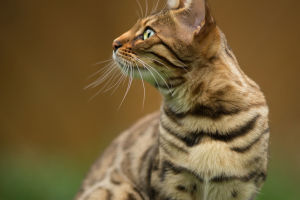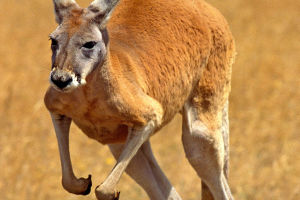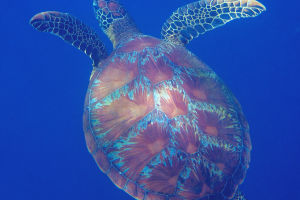Flamingo, also known as flamingo. It is the general name of 6 species of birds in 3 genera and flamingo family. The body height is about 80~160 cm and the weight is 2.5~3.5 kg. Body shape and size like that of a stork; bill short and thick, with protruding upper bill in the middle, curved downward, lower bill larger and grooved;
neck long and curved; feet extremely long and bare, with webbed between the forward three toes and rear toes Short and not touching the ground; wings of moderate size; tail short; body feathers white and rosy, flight feathers black, coverts dark red, and the colors are very bright.
It inhabits the waterfront of warm tropical salt lakes, wading in the shallows, and feeds on shrimp, clams, insects, and algae. When foraging for food, dip the head down, turn the mouth upside down, suck the food into the mouth, discharge the excess water and inedible dregs, and then swallow it slowly.
Cowardly in nature, they like to live in groups, often in groups of more than 10,000. The nest is built into a high pier with mud, and the nest base is in the water, about 0.5 meters high. When the eggs are hatched, the parent bird is lying on the nest, and the long neck is curved back and hidden in the back feathers.
Each litter lays 1-2 eggs. The eggshell is thick and blue-green in color. Incubation period is about 1 month. The chicks are raised by their parents at first, and gradually live on their own. Because of its bright plumage, it is kept as an ornamental bird.
The reason flamingos are red is because the food they eat contains a lot of red pigment. And food determines their appearance color is red. The food ingested by flamingos is mainly based on various seaweeds, and there are also some larvae of various plankton. Because there are red pigments in these foods, mainly chlorophyll, which accumulate in the wings and become red all over the body.
In terms of living habits, they like to live in groups, often in groups of 10,000. The group of small flamingos in Africa is the largest flock of birds in the world today. In the Bahamas of Central America, which has an area of only 13,939 square kilometers, there are as many as 50,000 Caribbean flamingos, and even more than 100,000 are gathered together.
Flamingos are not strictly migratory birds. Migrate only in times of food shortages and sudden changes in the environment. Migration is generally carried out at night, and during the day, it flies at a high altitude, all to avoid the attack of raptors. At night, it can fly 600 kilometers at a speed of 50-60 kilometers per hour.
The similar calls of turkeys and geese are one after another, which is deafening. From a distance, the red legs are like forests, and the long necks are also frequently squirming alternately, which is very spectacular. They are mild-mannered, usually timid and alert, and are excellent swimmers.
When flying, it can extend its neck and legs to form a straight line, and as long as one flies into the sky, there will be a large group of people following closely, chirping as they fly.
The food is mainly algae, protozoa, shrimp, clams, small worms, insect larvae, etc. in the water, and occasionally small mollusks and crustaceans. The way of eating is different and very strange, first bend the long neck down, turn the head, and then - sweep the curved beak left and right while walking, touch the bottom of the water to eat.
The structure of the beak is special, the groove of the lower beak is deep, and the upper beak is shallow and cover-shaped, with sparse serrations and fine hairs on the edge. It is like a large sieve when inverted in water, which can quickly suck water in and filter out.
When foraging, dip the head down, turn the mouth upside down, suck the food into the mouth, expel the excess water and inedible dregs, and keep the food in the mouth and swallow it slowly. It also has a large tongue that also helps push water out and prevents swallowing large objects.


